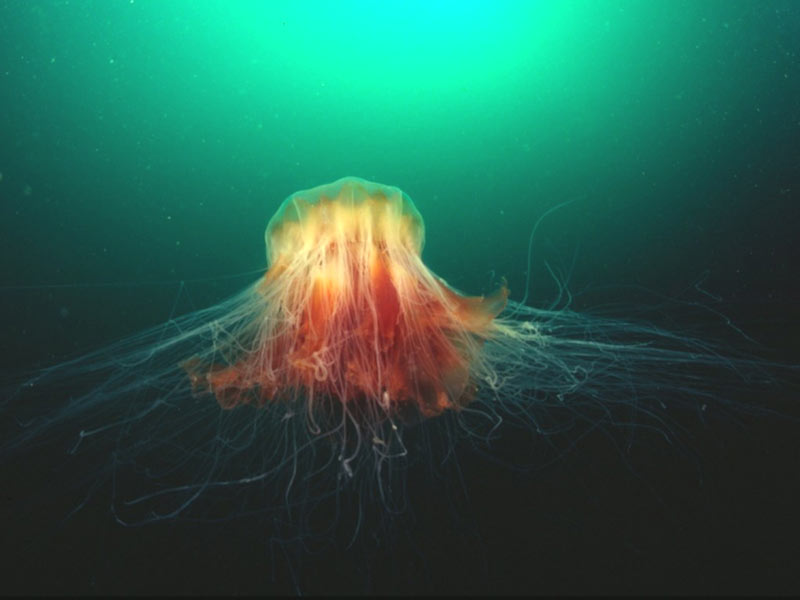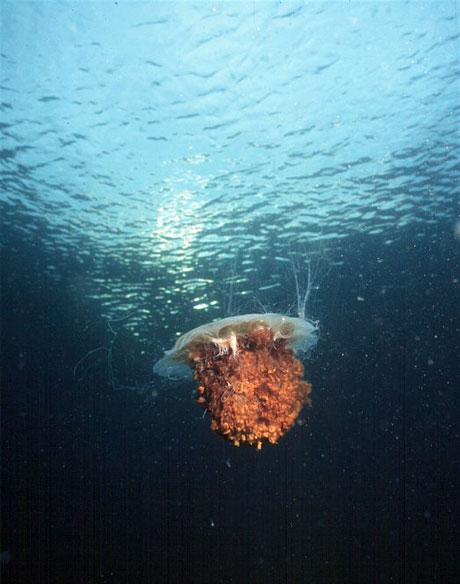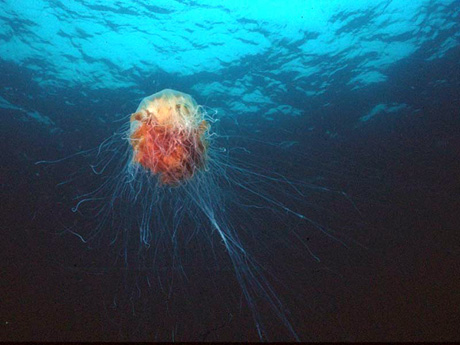With tentacles up to three metres long and covered with stinging cells, it’s better not to get too close to the Lion’s Mane jellyfish. It’s body can be 2 metres across, making it one of the largest species of jellyfish.
The tentacles are arranged in eight bunches, with each bunch containing over 100 tentacles. The oldest tentacles are often coloured dark red. They have a very severe sting that can produce blisters, irritation and muscular cramp and may even affect respiratory and heart function. Fragments of tentacles, left on buoy ropes for example, retain their stinging power.

Starting out life in late winter as a small member of the plankton, not more than a few centimetres across, in just a few months the Lion’s Mane achieves its tremendous size. It lives for only one year.
The Lion’s Mane occasionally occurs in large swarms, largely thought to be due to storms and tides that concentrate individuals together. They are predators, eating zooplankton, small fish and moon jellyfish.

The Lion’s Mane doesn’t just float with the currents – it swims by contracting its muscles and propelling itself forward.
You’ll find the Lion’s Mane in the cold Arctic and Pacific Oceans, the North and Irish Seas and around the coast of Australia. They are mostly no deeper than around 20 metres.
